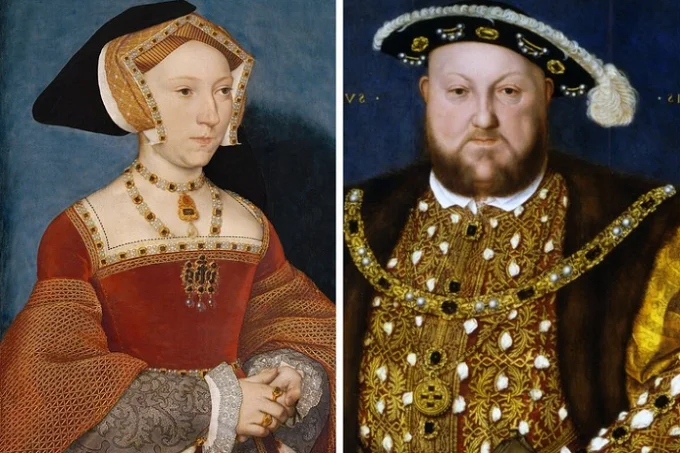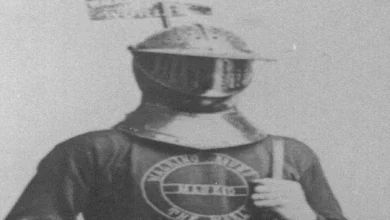6 marriages, quarrel with the Pope: Endless love affairs of King Henry VIII, nicknamed ‘the monster’

King Henry VIII of England went down in history for his endless love affairs, six marriages, and ferocious temper. His life path was already predestined, and he had a divine destiny.
However, Fate decided otherwise. Henry became King of England, but all his life, he struggled to find a worthy wife who would bear him heirs and become a true queen. Only Jane Seymour was such, but she died after giving birth. For the sake of his wives, the monarch even went against the Pope himself.
Henry VIII’s love affairs and bad temper
He was born into the royal family of Henry VII and Elizabeth of York. His Destiny was sealed by his father from birth. Henry was being prepared to take the clergy ministry. But the death of his elder brother Arthur changed everything. Henry was now Prince of Wales and heir to the throne after his father’s death.
In his younger years, his appearance aroused the awe of the ladies. Of course, he had great power and money and thus opportunities. In terms of his appearance, he could safely be called the standard of male beauty of the time. He was quite tall (1 meter 91 centimeters), athletically built, with a mop of red hair on his head. His love of hunting and jousting helped him keep his figure in top shape. Women could not resist such a man.

However, he gained a lot of weight over the years and looked like a “man-mountain”. This happened after receiving a leg injury, which limited his movements and deprived him of the time to devote to active hobbies. However, the monarch’s character remained difficult.
He was characterized by excessive volatility, underlying resentment and desire for revenge, and fits of rage. The latter was very frightening and had consequences not only for his enemies but also for his close friends and even his lawful wives. Scholars have speculated that the monarch suffered from MacLeod syndrome. This could explain his sudden and uncontrollable outbursts of anger.
Expecting an heir and six wives
The King of England dreamed so passionately of heirs and wanted his many wives to give him many sons. There were indeed many children, but only two daughters and a son survived. Subsequently, they became his heirs.
Henry VIII’s first wife was Catherine of Aragon, whom he married at age 16. Catherine bore the monarch five children, but only her daughter Mary survived. After being married to the monarch for 20 years, they divorced.
The second wife of Henry VIII of Tudor was Anne Boleyn. This girl managed to arouse the King’s passion. Anne gave birth to his daughter Elizabeth, but there was never an heir. After three years of marriage, the King decided to get rid of his young wife. She was executed in public in the Tower of London, accused of incest and adultery.
The monarch’s third wife was Jane Seymour. She was able to give birth to his son Edward. The King was happy, but the sudden death of his wife from childbirth fever left him despondent.
Henry sought a new wife, but many turned him down, given his reputation as a negligent husband and a cruel man. Then he was asked to marry the German princess Anne of Cleves. She was pretty in her portrait, but the King noted that she smelled bad and was not graceful when he met her. However, he married the princess. Their marriage lasted only six months and ended without heirs.
Catherine Howard became Henry VIII’s fifth wife. The monarch immediately drew attention to her attractive appearance and married immediately after her divorce. However, their marriage lasted 16 months and ended in tragedy. Catherine was beheaded in public for treason against the King.
Catherine Parr became the King’s sixth wife. Interestingly, this woman was not of high birth but was very clever and calculating. She was able not only to resist court plots against her but also to outlive the King. In addition, Parr married for the 4th time but died in childbirth. Her daughter Mary was not born in her marriage to King Henry VIII.

Love as payback
Most historians are certain that among the King’s six wives were the most beloved. Jane Seymour’s third wife could be placed in this category. She was the exact opposite of Anne Boleyn, for whom the monarch had a strong passion. However, the emotion quickly faded, and the disappointment remained. In addition, Anne Boleyn did not give her husband the long-awaited heir.
Another thing was that Jane Seymour knew how to find an approach not only to Henry but to all his entourage. A true diplomat, Jane loved her husband and wanted to surround him with comfort. And in 1537, she gave birth to the long-awaited heir, Edward. The monarch was happy, but not for long. After giving birth, Jane was unable to recover and died of childbirth fever. For Henry, it was a blow that he took hard. When the King was at death’s door, he even confessed that Jane was his most beloved wife and asked to be buried beside her.
To Anne Boleyn and Catherine Howard, the King had a brief passion and infatuation. But these women paid with their heads for his “love”. But only Anne of Cleves escaped the evil Doom. Henry simply did not like her as a woman. He thought of her as a brother to his sister, but not as a wife.
During their six months of marriage, the couple never had an intimate relationship. Upon learning of the King’s decision, Anne was stunned and humiliated, but she remembered the monstrous temper of her husband. Therefore, she did not beg to differ but acted as a real diplomat. This impressed the monarch so much, that he not only did not execute her but made her one of the richest women in the country. Anne of Cleves was called a sensible and happy queen, who managed to get rid of Henry, ensuring a luxurious life for herself.
Rules for marriage unions and the attitude of the church
In the sixteenth century, marriage for a woman was the preservation of a dignified reputation and social protection. For the man, it promised the continuation of the family and the possibility of a dowry. Marriages were not always concluded for love, especially for royalty. In this case, the marriage was concluded with a political advantage in mind. Most often, it was a reconciliation or strengthening of relations between states. As a rule, the wedding was played at a fairly young age.
King Henry VIII of Tudor of England was no exception. He married his first wife, Catherine of Aragon, at the age of 16. This union was made with the permission of the Pope himself, so the couple could not be dissolved during their lifetime. But the monarch decided that he should leave his wife and make an alliance with his new beloved Anne Boleyn. Not only did he have tender feelings for her, but he also hoped for the imminent birth of a son. But Pope Clement VII did not allow the marriage to be annulled.
Perhaps in history, Henry was the King who acted in his self-interest no matter what. He began a reformation in the country, which also touched the church and its subjection to foreign representatives.
The new priest of England, Thomas Cranmer, in 1532 made concessions to Henry and divorced the couple. In retaliation for the English monarch, Pope Clement VII excommunicated him. And Henry VIII passed a new law. Now it was the reigning monarch, not the Pope, who became the head of the Church of England.




